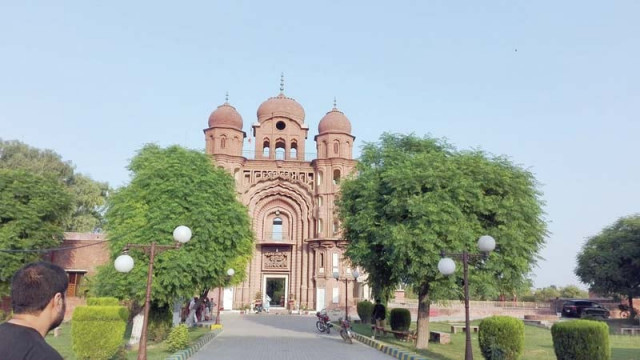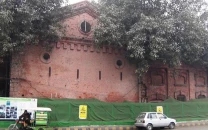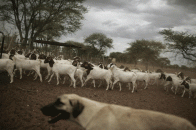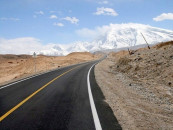Gurdwara Rori Sahib: 200-year-old Sikh temple shines to date
It sees nearly 200,000 visitors every year during peak season

The main building consists of three domes, with cutwork in bricks, while inside the building, there is a pool for ablutions on the right side and a hall in on the left. PHOTOS: FILE
Sandeep Singh, who has been looking over the administrative affairs of the gurdwara for the last 15 years, told The Express Tribune, the building is one of the many remnants of the Sikh ruler, Maharaja Ranjeet Singh’s, reign.

Althought urbanisation has left the gurdwara away from the main city, in a deserted location, history associated with it makes the place significant for the followers of Sikhism.
According to Sandeep, the place has got its prominence from the legend of Guru Nanak Dev. He is said to have once sat on a pile of pebbles at the place to meditate for the first time. The name of the place, Sandeep added, comes from the history of Mughal rule. The place came to be known as Rori, meaning pebbles in Punjabi, after Eminabad was destructed by the Mughal emperor Babur’s force in 1521.
Later, in 1578, Babur’s army took Guru Nanak Dev into prison. Guru Nanak Dev is known as the first guru of Sikhs.
Bricks of time
Sandeep said the gurdwara building is approximately 200 years old, but the exact year in which it was built was unknown.

The gurdwara is located at about two kilometres north-west from Eminabad town and 17km away from Gujranwala city.
Its main building consists of three domes, with cutwork in bricks.
Inside the building, there is a pool for ablutions on the right side, while a hall in on the left.
The second structure consists of white dome under which is a room. The door of the room opens to a veranda.
“The main and adjacent building was commissioned by Ranjeet Singh, while a large estate, spanning nine squares of agricultural land was also allocated as the gurdwara premises during his era,” Sandeep said. “Shrines were constructed at the spots where Guru Nanak went to medidate – most prominent of them are Nankana Sahib, Sri Darbar Sahib or Golden Temple in Amritsar, Gurdwara Panja Sahib in Hasan Abdal and Rohri Sahib.”
Overlooked
Sandeep said the building remained largely ignored after 1947, however, the government took some significant conservative steps in 1999 and since then all the administrative issues are tackled by Auqaf and Religious Affairs Department.
He added that owing to rich Sikh culture that prevailed in the region prior to 1947, historically important shrines such as Gurdwara Chakki Sahib and Gurdwara Khuhi Bhai Lalo are also located in Eminabad.

According to Sandeep, the gurdwara still hosts annual Vesakhi mela.
He added the gurdwara receives most visitors in April and November, when the birth of Vesakhi and Baba Guru Nanak are celebrated respectively.
“On other days, Sikh visitors are welcome to stay here at any time,” Sandeep said.
He maintained the peak season sees approximately 0.2 million visitors every year.
Published in The Express Tribune, November 3rd, 2016.



















COMMENTS
Comments are moderated and generally will be posted if they are on-topic and not abusive.
For more information, please see our Comments FAQ